#maguindanao
Text


Indigenous textiles from the Maguindao tribe, Philippines.
#Maguindanao#Bangsamoro#Philippines#Filipinas#Filipino#Muslim#Pacific islander#Textile#Folk fashion#Fashion#Traditional dress
58 notes
·
View notes
Text

November 23, 2009 marks the date of the Maguindanao Massacre.
A certificate of candidacy was to be filed for Buluan vice mayor Esmael Mangudadatu, the rival of Datu Unsay mayor Andal Ampatuan Jr., for the forthcoming Maguindanao gubernatorial election when 58 people were kidnapped, some sexually assaulted, and later all brutally killed in the name of the Ampatuan clan.
The people killed included Mangudadatu's wife Genalyn Tiamson; his sisters; 32 journalists; lawyers; aides; and motorists who were witnesses or mistakenly identified as part of the Mangudadatu convoy. The body of the 58th victim Reynaldo Momay was never found.
From Luzon to Mindanao, the Philippines is filled to the brim with political clans and extrajudicial killings. People of the Philippines v. Ampatuan Jr., et al. was not the first instance of political violence in the Philippines but rather one of its most well-known. The case was finally closed ten years after the crime was committed with following verdict: guilty of 57 accounts of murder.
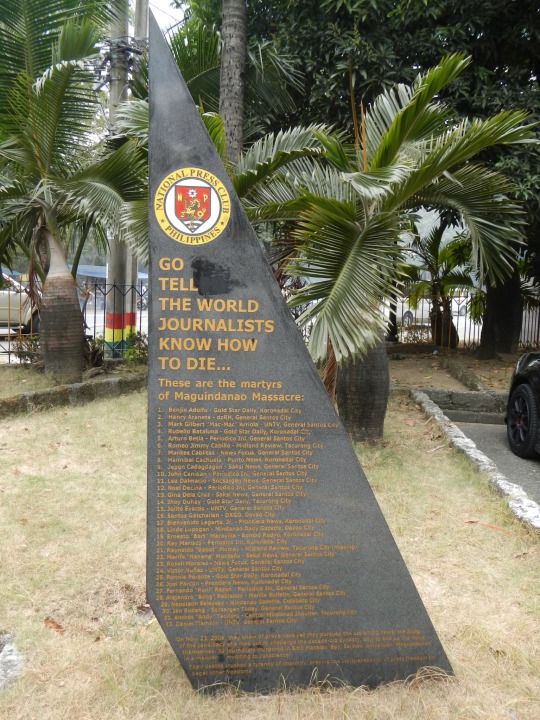
“GO TELL THE WORLD JOURNALISTS KNOW HOW TO DIE…”
11 notes
·
View notes
Text
Pink Mosque - Datu Saudi-Ampatuan, Maguindanao (Travel Guide)
Pink Mosque – Datu Saudi-Ampatuan, Maguindanao (Travel Guide)
THE PINK MOSQUE OF PEACE AND LOVE
This 2022 I had an opportunity to travel again. My cousin, Ben, asked me to be his assistant for a client in Cotabato City in Mindanao. I never expected my visit there to be an eye-opener. Cotabato City is a Muslim majority municipality and I got to learn a lot from their culture and religion. On our last day, we were allowed to visit known mosques around the…

View On WordPress
4 notes
·
View notes
Text
the way I respond to „Ilay Gandangan“ (i.e. a Maguindanaon chant summoning the solar deity Ilay) makes me think of a story where a sun god's latest human avatar happens to be some goth chick
1 note
·
View note
Photo

sultan haji hassanal bolkiah mosque - maguindanao, philippines
#eric opalite#cotabato grand mosque#sultan haji hassanal bolkiah mosque#maguindanao#cotabato#philippines#35mm
1 note
·
View note
Text

Two FA-50PH Fighting Eagle Combat Aircraft of the Philippine Air Force (PAF) provided Ground Support to Philippine Army (PA) Troops during an Assault on a Temporary Encampment that resulted in the Deaths of eleven Terrorists in Maguindanao del Sur recently.
Troops belonging to the 6th Infantry Division (6ID) spotted the Encampment and called in the FA-50PH Air Strike and additional Artillery Bombardment. The Troops then started the Ground Assault against an estimated total of 15 Dawlah Islamiyah (DI) Terrorists. The FA-50PH Aircraft dropped eight 227 kg Bombs during the Operation.
SOURCES:
11 Dawlah Islamiyah militants slain in Army operation in Maguindanao del Sur – Official {Archived Link}
Philippine Troops kill 11 suspected Islamic Militants {Archived Link}
Check out the Links to my other Social Media Accounts at https://linktr.ee/rhk111
If you like my Work, buy me a Coffee to help support it at https://www.buymeacoffee.com/rhk111
#fa-50ph fighting eagle#philippine air force paf#dawlah islamiya di#philippine army pa#6th infantry division#maguindanao del sur
0 notes
Text
Ampatuan / Maguindanao Massacre: 13 years hence
Ampatuan / Maguindanao Massacre: 13 years hence
On 23 November 2009, exactly 13 years ago, Andal Ampatuan, with his armed paramilitary security, with the complicity of some policemen, massacred 58 people, including 34 journalists. The American NGO the Committee to Protect Journalists (CPJ) described the killings as “the single deadliest event for journalists in history.”To commemorate the event, the Philippine Press Institute (PPI) and the…
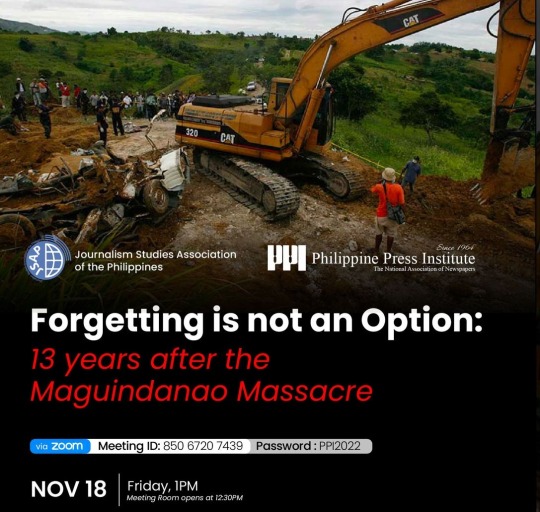
View On WordPress
0 notes
Text
Gubat Banwa: THE SULTANATE OF AKAI

LUNAR KNIGHTS. CHIVALROUS POETS. FAITHFUL PANDITA. One of the most powerful mahamandalas in Gubat Banwa, conquering in their Divine Striving for Goddess, is inspired by the various Sultanates of Southeast Asia! STRIVE EVERMORE FOR GODDESS: AKAI!
While Akai is host to a huge number of religions, their culture and allied polities are skewered through with belief and utmost reverence for The Most High Baginda, BAGINDA SUMONGSUKLAY, which is not her name but a descriptor as the Crescent Moon.
Akai reverses the use of God and uses "Goddess" instead. They are a primarily matriarchical culture, and they believe that Goddess lives on the Moon. The Moon is the most important thing in the universe: it is the hole that leads into the True Space of Goddess.
Akai is intensely researched and inspired by popular Postclassical Southeast Asian societies: Malacca, Johore, Maguindanao, Sulu and more. They are raiders far and wide, and fight so that all of Gubat Banwa will know of the providence of Goddess.
Their faith, AGMA DAMLAG, is inspired by Southeast Asian Islam, which is skewered through with mixtures of local folklores and legends, making it different from "pure" Islam. It is filled with mysticism, jinns, and devil dancers.
Their Disciplines are focused on overwhelming and protecting, on defense. They are the unbreakable ones, after all! They are also inspired by Islamic Chivalry notes: it is the Sultanates that house the most court romance, poetry, and chivalry.

BEAST HUNTERS are those that turned the common profession of hunting in the Isles into an actual martial art. Out of necessity: Beast Hunters are quick and debilitating. According to their Faith, they cannot allow their dogs to bleed the prey before they do.

the MARTYRS are warriors that go into battle in a fierce death battle trance, always ready to die for their convictions. they get stronger as the fight goes, and their techniques let them strengthen their attacks, throw their giant weapons, go into holy rage, and wield juru pakal

SARIMANOK KNIGHTS are true chevaliers who wield the strength of the sarimanok--a revered omen bird that is integral to many cultures of the sword isles--to punish and smite those that would force them to kneel! they can fly upon sarimanok, or be imbued with the holiness of one

STRIFESINGERS sing the grand dirge of Gubat Banwa, as it revels in violence. they are constantly singing: they have a burst 2 aura that constantly heals and gives buffs, and they can put down grand songs that manipulate allies and the battlefield!

warriors that summon the knights of the sea: churning the waters with swordfishes and sharks are a common element in seasian folk tales. the swordfish cavalier is the purest representation of that, allowing them to manipulate water, turn into water, or summon the moon
All of these and more in our KS. Back us now and help us get more art and writing for this grand mahamandala!
Just as important: in solidarity with our colonized and oppressed peoples in Palestine! From the river to the sea, Palestine will be free! Check out this ongoing fundraiser that has over 250+ games for Gaza!
89 notes
·
View notes
Text
The Fourth Blade: Panabas - "For Chopping"
Four days to the launch of the white-hot lightning that is the Gubat Banwa Kickstarter!
Gubat Banwa is a TTRPG supported by the twin pillars of tactical martial arts and contemplative war drama. Meditate upon love and violence as warriors of a burning world. Will you stem the tide of blades? Or is it rising by your will?

I'll be posting the weapons I've drawn for the game as a countdown until the launch on October 10. This was supposed to be a Swordtember series, but we needed a little more time to gain momentum.
4/7 blades, past the halfway point, let us proceed with the PANABAS

Towering amongst what blade collectors categorize as "Moro weaponry", the panabas is quite possibly the largest blade I've ever drawn. Like- I'm not lying, I drew all the blades in this series to scale relative to each other, and the panabas has by and large been the one determining how big my canvas needs to be.
The edge is on the longer curve, the spine of the blade is thicker near the handle, and the handle is about as long as the blade (if not longer).

(Photo from Kristian Josef Acedo)
The form belies the function; it isn't difficult to guess how this blade is used just by looking at it.
The name- if I'm not mistaken- is an even bigger giveaway. Panabas supposedly comes from "pang-tabas" which literally means "for chopping". It also goes by the name of nawi.
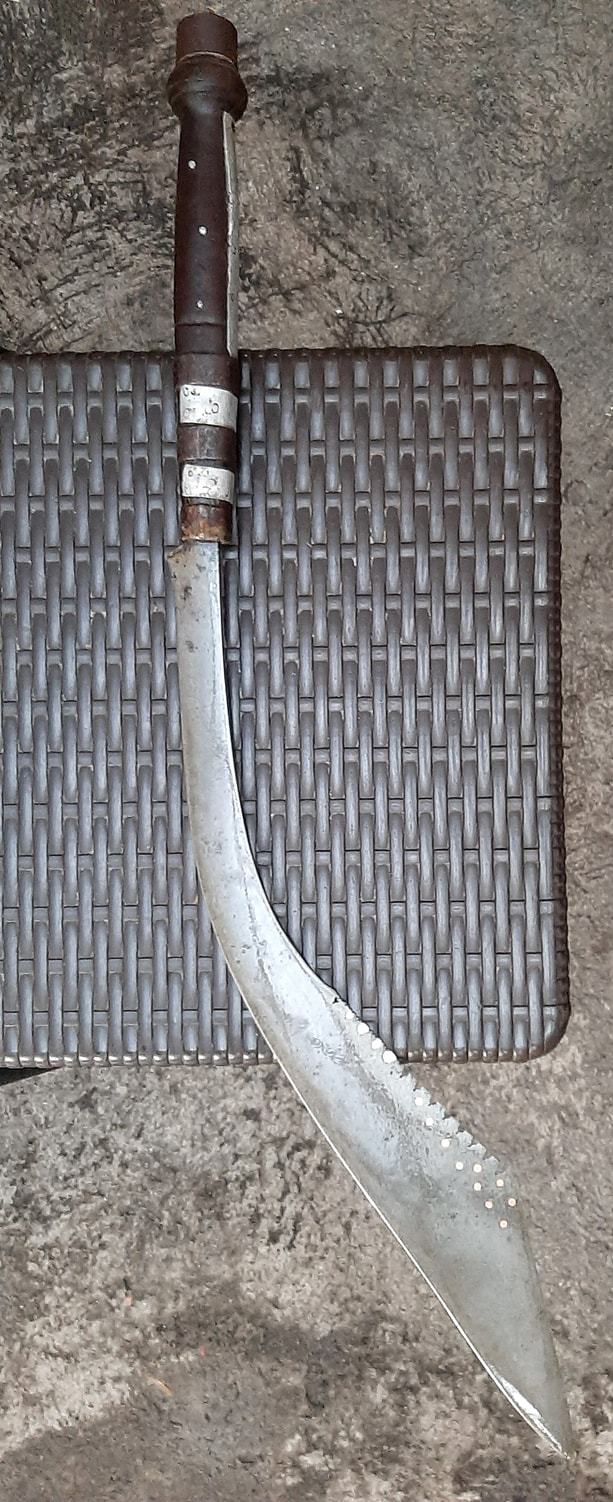

(Photos from Raymundo Lucero)
As large as its reputation might be, the choppers aren't always massive.
Their utility ranges from agricultural to combative to ceremonial, and the size and shape usually matched the nature of the work.
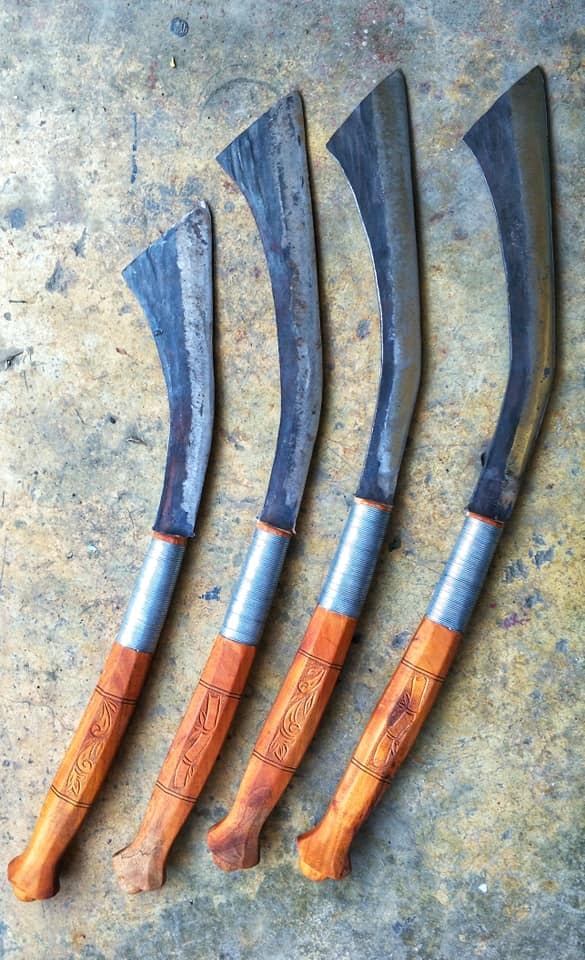
(Tools from Datu Paglas, Maguindanao)

(Photo from Dondon Dimpas)

(Exhibit at Museum of the Filipino People- biggest one)
The panabas is most often attributed to the peoples of Maguindanao, though the range of its use and the variants of its make span across large portions of the Mindanao area.
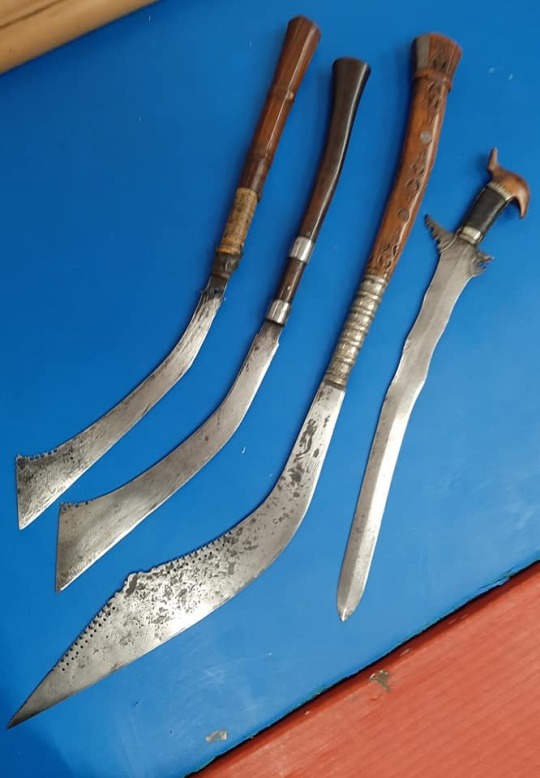
(Antiques from the collection of Richard Hudson, size comparison with a kalis)
A popular tale (especially amongst Filipino Martial Artists) states that the US Marines wore leather collars to protect their necks during the American Occupation in Mindanao, due to blades like these that gave the troops pause, and feel that the extra protection was necessary.
Supposedly, this is where the term "leatherneck" came from. Although the veracity of this latter claim is a bit on par with the claim that the Colt .45 was invented specifically to stop the same Moro warriors, the story has already stuck.

(Antique from Lake Lanao)

(Photo from The Metropolitan Museum of Art)
We touched upon "Traditional" blades last time, referring to blades made by the same people to whose cultures those blades belong.
This time we look at the other side of the coin. "Modern" is the term collectors here often use to refer to reinterpretations, usually by modern smiths who are separate from where a blade traditionally belongs.
The point of reference I used for "Traditional" blades before is a katana forged by a traditional Japanese swordsmith. If- instead- a white blacksmith in America were to forge a katana using their own smithing methods, that would be considered as a "Modern" blade under this categorization.
I'll leave it to you to spot the differences in these next few photos:
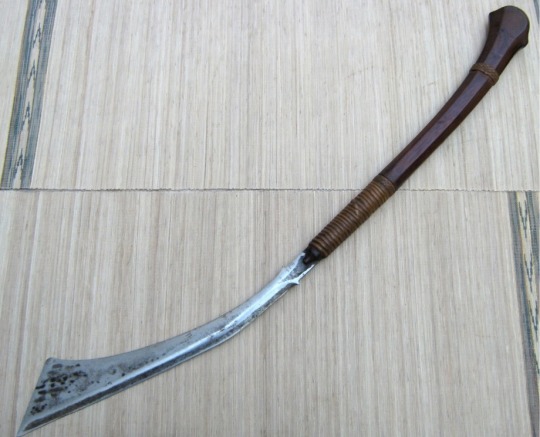
Traditional panabas with a rattan ferrule
(Photo from Lorenz Lasco)

Modern blades by Jun Deuna (Espanola) and RE Pandayan (Quezon)
(Photo from Dennis Andrew Golez)

Traditional blades (Marawi and Maguindanao)
(Photo from Dennis Andrew Golez)

Modern full-tang build by Traditional Filipino Weapons (I know who forged this but I won't doxx their location)
(Photo from the TFW website)

Modern full-tang build by Batangas Armory (Batangas)
(Photo from Job Abat)

Pair of panabas and a binuaya (leftmost) by Traditional Moro Blade, Maguindanaon (Maguindanao)
Say it with me this time! Blade culture is alive and still developing.
Mindanao was never conquered by Spain- the fierce resistance of the Moros made sure of that- and again it shows in the blade cultures. Though the panabas is now popular enough to have modern reinterpretations made by smiths across the Philippines, the traditional panabas and the people who make them are still around.
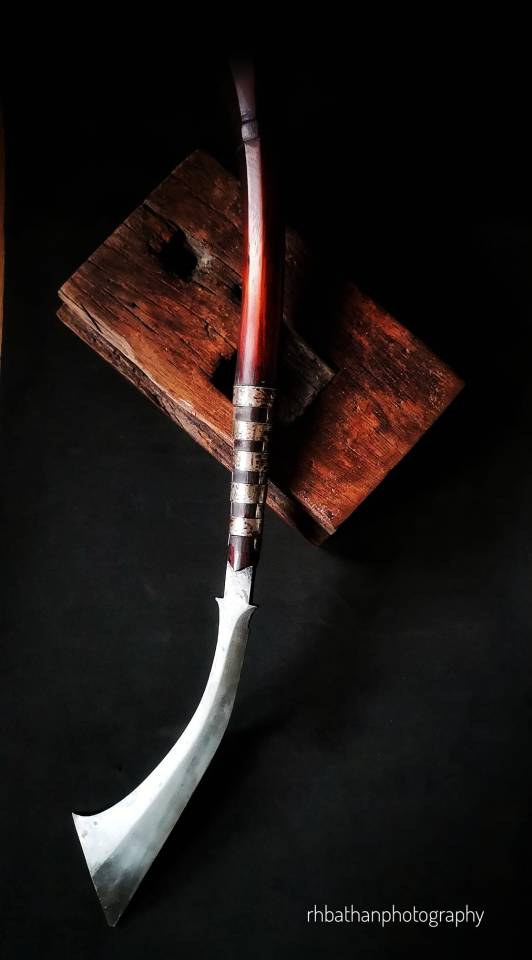
(Photo from Iniingatang Talim at Kaluban, taken by Ramon H. Bathan)
One of the Five Major Mahamandalas of Gubat Banwa pays homage to and gleans inspiration from living cultures like those I mentioned here.
Yes- I repeated the text from the previous installment, because it's equally true, here.
Additionally, the panabas shows up as the iconic weapon of the Martyr- one of the 25 Disciplines (read: "character classes") whose moon-bright martial techniques you could pick up in-game.
Anyway, go check out the Kickstarter!
The Gubat Banwa Kickstarter launches in 4 days! Check it out here:
Not long now- this is a very small team of creators from the global south knocking on your doors asking for help to get the word out. I truly cannot understate how small this team is, and how amazing it is that they've come this far- we just need a little bit of a boost!
With your help, this grand ambition can be realized. We would greatly appreciate any help rendered towards getting more eyes on this game!
#gubat banwa#gamedev#ttrpg#ttrpgs#indie ttrpg#indie ttrpgs#tabletop rpgs#rpgs#rpg#southeast asia#southeastasia#dnd#kickstarter#swords#philippine blade#weapon design#philippine history#philippine culture#filipino artists#artists on tumblr#kathang langit#help us get the word out!#fantasy#fantasy worldbuilding#swordtember#bolo#itak#moro weapons#panabas#moro blades
58 notes
·
View notes
Text
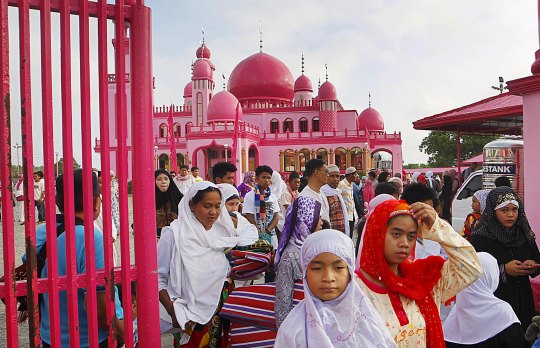
2015: Morning prayers at the Pink Mosque in Datu Saudi Ampatuan town, Maguindanao province in southern Philippines. [Marconi Navales/Reuters]
57 notes
·
View notes
Text
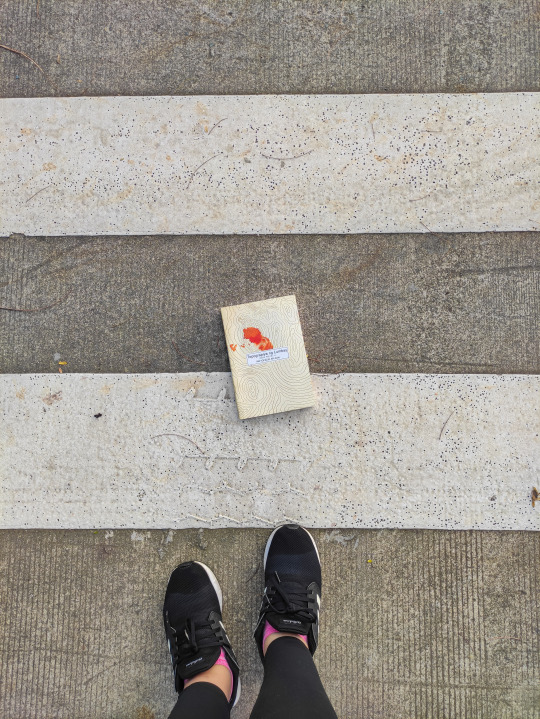

I hesitate to call whatever this it is I’m writing here as book reviews, so I guess tawagin ko na lang silang #ReadingJourney. So ayun, here’s my reading journey with RM Topacio-Aplaon’s “Topograpiya ng Lumbay.”
Based on this book alone, I find a lot of similarities between RM Topacio-Aplaon’s writing and themes to Haruki Murakami. In my head, I see him as a “grounded Murakami.”
Topograpiya ng Lumbay follows three lonely people whose lives intersect because of a horrific event that coincided with Yolanda. In the span of a week or so, we follow their journey to unearth the past and, more importantly, find themselves. It’s one of those nothing-really-happens book. The reader just follows these lonely characters to places and listens to their pseudo-deep conversations. As I said, very Murakami-esque.
Another (unfortunate) similarity between RM and Haruki is how they write women. The fetishization of thin, lithe women is all over the novel. In more than one scene, Melody, who has a ‘maliit na suso’ at ‘mapupulang tuhod,’ masturbates for nothing but to cater to the male gaze. (I’m just tired of it. Having read a lot of women authors, I am highly sensitive to these things now. And I’m glad I am. I wouldn’t have noticed all of these bullshit when I was sixteen, and that’s sinister.)
That said, there were enough interesting elements in the novel to keep me going. It touched on topics that I thought were interesting. I can rally behind the body horror-ish vibes of the book. There are many scenes where the gross bodily fluids and functions were underscored. Clearly, may pinaglalaban din si RM pagdating sa depiction ng kadiring mga bagay na ginagawa ng mga katawan natin sa mga nobela. Merong mga pangugulangot, pagkamot ng bayag, pag-amoy ng hininga etc. At masasabi ko namang na-enjoy ko yung grossness.
There were moments when characters were used as mouthpieces. And I thought hindi ganon ka-elegant yung pagka-insert ng mga opinyon nya sa narrative. For one, RM has some strong opinions about Filipino readers who seem to prefer English novels, which I do not agree with. I tend to give Filipinos more grace just because our colonial past, our government, and the systems here are shit.
It’s the novel’s political dimension that I enjoyed the most. It felt to me like I was let in on a secret. I should say tho, that all the horrific scenes happen around this political dimension; there’s torture, mutilation, and bestiality (which thankfully was not depicted in a graphic way.) And I know that politics in rural areas of the country are violent—who can ever forget the Maguindanao Massacre?—but it’s important to be reminded.
Overall, this is not a favorite book, but I’m not giving up on RM Topacio Aplaon yet. (hello, cognitive dissonance!) I still have two of his books that I want to read before I can say for sure that he’s not the author for me.
May pakiramdam akong maiinis si RM Topacio Aplaon na Ingles ‘tong review ko ng libro nya, but whatever.
15 notes
·
View notes
Text
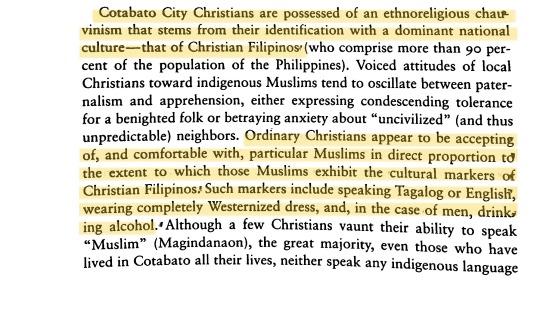
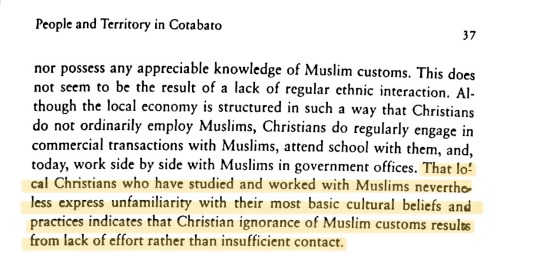
Muslim Rulers and Rebels: Everyday Politics and Armed Separatism in the Southern Philippines (1998) by Thomas M. McKenna
Note #1: Cotabato City is a Muslim-majority city located at the southwest region of the Philippines within the island of Mindanao. In a 2019 plebiscite, it became a part of the Bangsamoro Autonomous Region of Muslim Mindanao, the only autonomous region in the Republic of the Philippines.
Note #2: Maguindanaon or Magindanaon is not the only language spoken by Muslim Filipinos but is one of their most commonly spoken languages, including but not limited to Maranao (which is closely related to Maguindanaon, both of which fall under the same Danao language family) and Bahasa Sūg (which is more closely related to other Visayan languages of the Philippines and is also spoken in Tausug or Suluk enclaves outside the Philippines, i.e. Borneo.)
#philippines#islam#interfaith relations#cultural hegemony#southeast asia#religion#barmm#mindanao#x#cotabato#maguindanao
23 notes
·
View notes
Note
I've seen your art of nyo philippines and she's very pretty, are those traditional fabrics?
(I love you, anon)
Her panuelo and camisa are patterned from the Tennun fabric of the Yakan:

Her jewelries are the rinti (from the Maranao) and a brass gong necklace (from the T'boli):
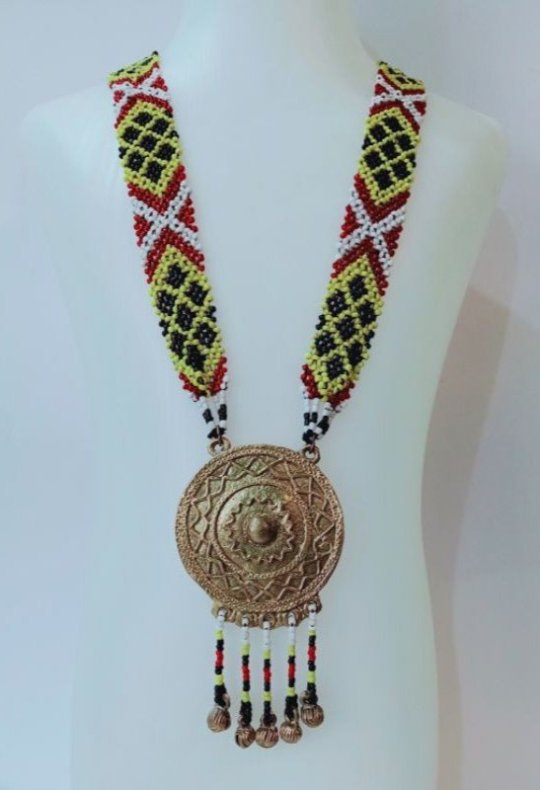
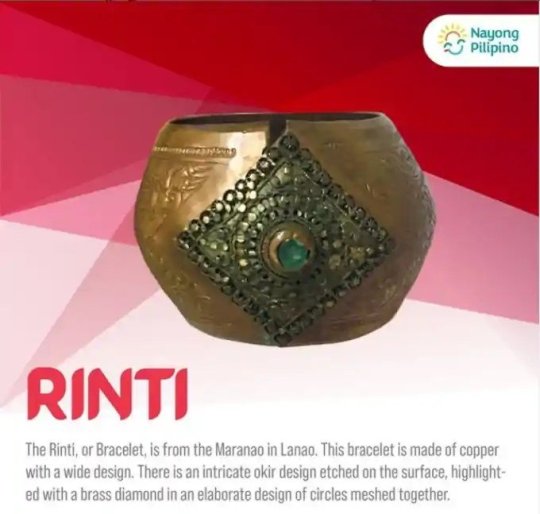
her tapis is from Habul Tyahian of the Tausug

her saya is patterned from the Inaul fabric of Maguindanao but I lost the picture of the actual fabric I based it on 🤧
14 notes
·
View notes
Text
MANILA, Philippines (AP) — Philippine forces killed an Abu Sayyaf militant, who had been implicated in past beheadings, including of 10 Filipino marines and two kidnapped Vietnamese, in a clash in the south, police officials said Friday.
Philippine police, backed by military intelligence agents, killed Nawapi Abdulsaid in a brief gunbattle Wednesday night in the remote coastal town of Hadji Mohammad Ajul on Basilan island after weeks of surveillance, security officials said.
Abu Sayyaf is a small but violent armed Muslim group, which has been blacklisted by the United States and the Philippines as a terrorist organization for ransom kidnappings, beheadings, bombings and other bloody attacks.
It has been considerably weakened by battle setbacks, surrenders and infighting, but remains a security threat particularly in the southern Philippines, home to minority Muslims in the predominantly Roman Catholic nation.
Abdulsaid, who used the nom de guerre Khatan, was one of several Abu Sayyaf militants who aligned themselves with the Islamic State group.
A confidential police report said that Abdulsaid had been implicated in at least 15 beheadings in Basilan, including of 10 Philippine marines in Al-Barka town in 2007 and two of six kidnapped Vietnamese sailors near Sumisip town in 2016. The Vietnamese were seized from a passing cargo ship.
He was also involved in attacks against government forces in 2022 and a bombing in November that killed two pro-government militiamen and wounded two others in Basilan, the report said.
Abdulsaid was placed under surveillance in February, but police forces couldn’t immediately move to make a arrest because of the “hostile nature” of the area where he was eventually gunned down, according to the report.
On Monday, Philippine troops killed the leader of another Muslim rebel group and 11 of his men blamed for past bombings and extortion in a separate clash in a marshy hinterland in Datu Saudi Ampatuan town in southern Maguindanao del Sur province, the military said.
Seven soldiers were wounded in the clash with the members of the Bangsamoro Islamic Freedom Fighters.
The Abu Sayyaf and the Bangsamoro Islamic Freedom Fighters are among a few small armed groups still struggling to wage a separatist uprising in the southern Philippines.
The largest armed separatist group, the Moro Islamic Liberation Front, signed a 2014 peace pact with the government that eased decades of sporadic fighting.
Moro Islamic Liberation Front rebel commanders became parliamentarians and administrators of a five-province Muslim autonomous region in a transition arrangement after signing the peace deal. They are preparing for a regular election scheduled for next year.
2 notes
·
View notes
Text
Hello I am from the Philippines and I am here new and I want to beg for a little assistance.🙏🏼🙏🏼
Hello I'm here to humbly asked help for my family to go back to our place in San Fernando.. 🙏🏼😢
I am new here... I am from Facebook and Foreign person message me to try the Reddit and so I did. But I only have 8 Points and they need 200-400 and need to be active for month , Then there's this person too who Suggested me to post my life here.please do not judge me because life here is not easy 😢💔
We are from maguindanao, Philippines.We have evicted from the house we were staying for so long , we leave our place before because of war that is happening in our Region . We need to find place but we can't afford to rent house nor Make our own house that will Estimatedly gonna Cost me 200,000+ Philippine money ..
For now we decided to go back to our place that is already very broken that is not really far from where we rent Before.
Money is really tight for us I am only doing laundry to survived I have three kids , and I am a single parent . My boyfriend leave us changing us for a younger woman than me . I have to asked help here because we don't know where else to go.. House is totally broken and damaged no roof at all but it's okay as long as we are all safe Including my kids.
I'm not asking the whole amount anything helps so I can reach my goal .. it is for us all family transportation so we can all go home and live peacefully please someone help me 🙏🏼🙏🏼😢 I have many proof and A picture or video you can email me or message in Facebook..
My PayPal is this: [email protected]
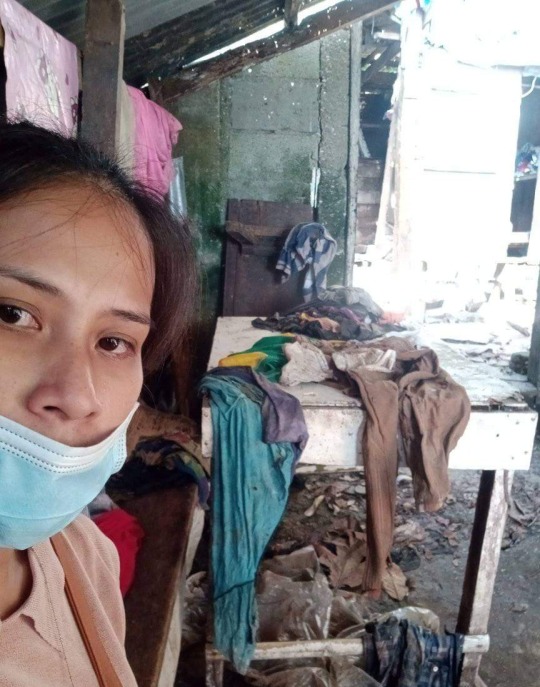

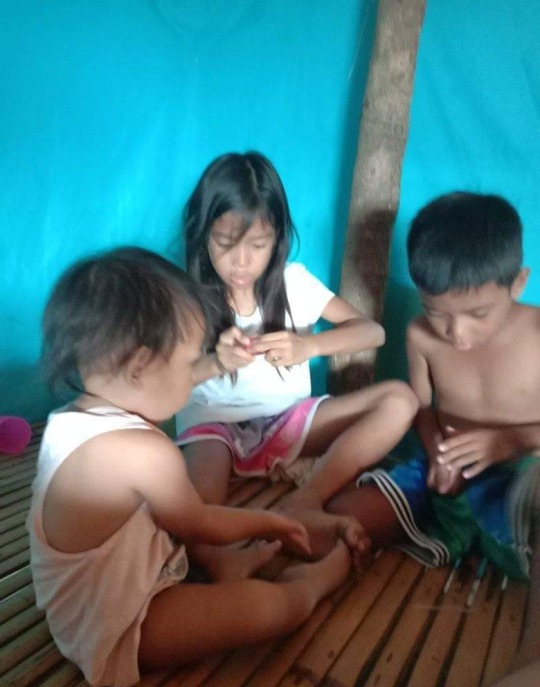
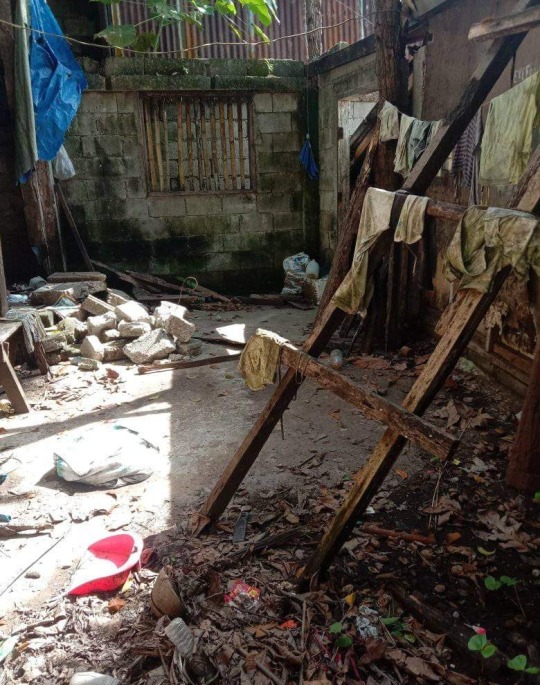

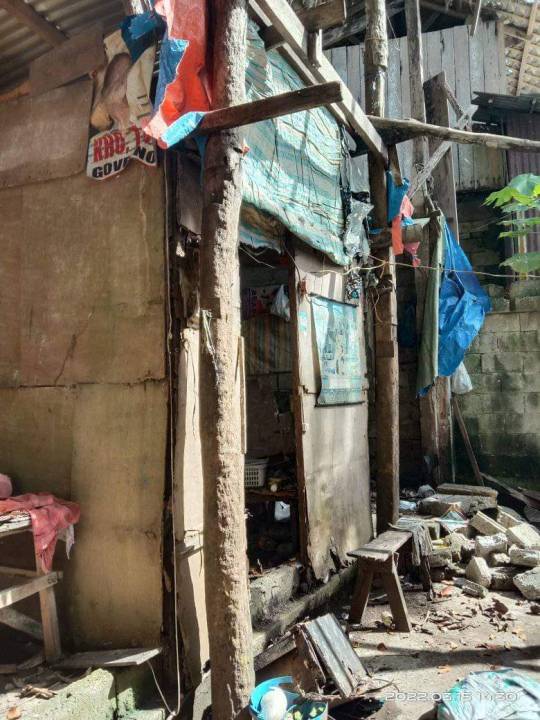
37 notes
·
View notes
Text
Filipino traditional costumes are diverse and vary across different regions of the Philippines. Here are some examples:
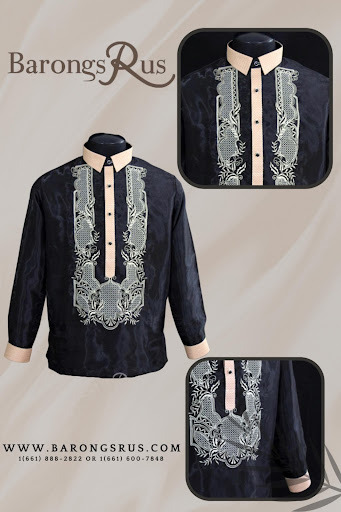
Barong Tagalog: The Barong Tagalog is a formal shirt-like garment for men, often worn at special occasions and events. It is made from lightweight fabrics like piña (pineapple fibers) or jusi (banana fibers) and is known for its intricate embroidery. The Barong Tagalog is typically worn untucked over a plain undershirt.
Maria Clara Dress: Named after a character in Dr. Jose Rizal’s novel “Noli Me Tangere,” the Maria Clara dress is a traditional gown for women. It features a flowing skirt and butterfly sleeves, often made from lightweight fabrics like piña or jusi. It’s commonly worn during formal events and occasions.
Terno: The terno is an iconic Filipino formal gown for women. It features a distinctive butterfly sleeve, which can vary in size and design. The terno is often worn at prestigious events and was even popularized by former First Lady Imelda Marcos.
Ilocano Attire: In the northern region of Ilocos, both men and women wear traditional outfits. Men wear a striped woven shirt called “inabel” or “baro’t saya,” while women wear a wrap-around skirt called “patadyong” along with a matching blouse.
T’boli Attire: The T’boli people from Mindanao have unique traditional clothing. Women wear intricately designed blouses and skirts adorned with vibrant colors and patterns. They also wear heavy beadwork and accessories.
Ifugao Attire: The Ifugao people from the Cordillera region wear distinctive attire. Men often wear a loincloth called “wanes” and a wrap-around skirt called “tapis.” Women wear wrap-around skirts and intricately woven tops.
Maguindanao Attire: The Maguindanao people from Mindanao have ornate traditional clothing. Men wear a long-sleeved shirt called “kandit,” while women wear a blouse and a wrap-around skirt called “malong.”
Yakan Attire: The Yakan people from Basilan have vibrant and colorful woven fabrics. Women often wear a “sablay” or “blouse” paired with a “sambayang” or wrap-around skirt.
Mangyan Attire: The Mangyan indigenous groups from Mindoro have distinct clothing. Women wear “tapis,” a wrap-around cloth, and men wear a loincloth called “baag.”
Kalinga Attire: The Kalinga people from the Cordillera region are known for their body tattoos and traditional clothing. Women often wear a “lufid” or wrap-around skirt along with intricate beadwork.

These examples represent just a fraction of the rich variety of traditional costumes in the Philippines, each reflecting the culture, history, and unique heritage of different regions and indigenous communities.
#barongtagalog#philippines#barongs#philippine culture#custommadebarongtagalog#filipinopride#madeinthephilippines#filipinoculture#filipinowedding#pinoy#baro’t saya#basketball#Custommadebarongtagalog#weddingbarong#kimonadress#FilipinianaGown#pineappleindustries
2 notes
·
View notes